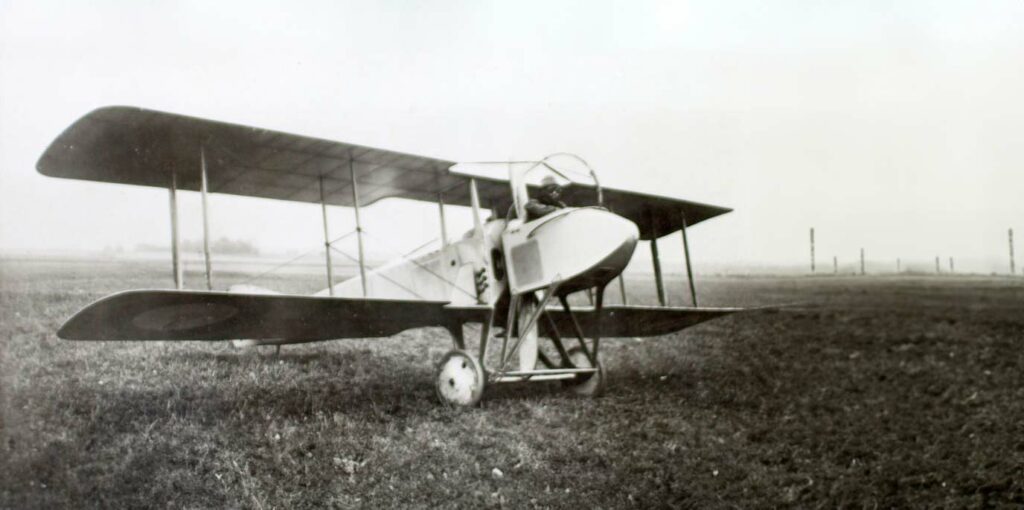The SPAD S.A, a significant WWI French fighter aircraft, marked for its innovative design and impactful role in early aerial combat scenarios.
This article delves into the SPAD S.A, a French fighter aircraft from World War I, examining its development history, design, performance, military use, and its overall contribution to early aviation and warfare. The SPAD S.A series, comprising several models including the S.A.1 to S.A.4, holds a notable place in the annals of early military aviation. Designed during World War I, these aircraft were a response to the evolving demands of aerial combat, emphasizing speed, agility, and firepower.
History of the Development of the SPAD S.A
In the early 20th century, the rapid evolution of military technology ushered in the era of aerial warfare. The Société Pour L’Aviation et ses Dérivés (SPAD), a prominent French aircraft manufacturer, spearheaded by designer Louis Béchereau, initiated the development of the SPAD S.A series to meet the French military’s urgent need for effective fighter aircraft. Launched around 1915, the program sought to produce a plane capable of gaining air superiority.
The first flight of the SPAD S.A occurred in 1915. These aircraft were developed in an era when the strategic and tactical importance of air combat was just being realized, and there was a pressing need for planes that could engage effectively with enemy aircraft.
Design of the SPAD S.A
The SPAD S.A series was revolutionary in its design. The aircraft were biplanes, featuring a mix of wooden and metal construction. The wingspan was approximately 8.05 meters (26 feet 5 inches), and the length was around 6.30 meters (20 feet 8 inches).
One of the most notable aspects was the installation of a synchronized machine gun, a significant advancement in aerial combat. This allowed the pilot to fire through the rotating propeller without damaging it, a critical feature in dogfights. However, the early models faced issues with the synchronization gear, which sometimes led to accidents.
The aircraft’s design also included a relatively powerful engine for its time, but this made the SPAD S.A heavier and less maneuverable than some of its contemporaries. Despite this, its robust structure provided a degree of durability that was advantageous in combat situations.

Performance of the SPAD S.A
Powered typically by a Le Rhône 9C 9-cylinder rotary engine, the SPAD S.A series had an output of around 80 horsepower. This enabled a top speed of approximately 155 kilometers per hour (96 miles per hour) and a service ceiling of about 4,000 meters (13,123 feet). The operational range was limited, typical of the fighter aircraft of the period.
In comparison with contemporaries like the German Fokker Eindecker, the SPAD S.A was somewhat less agile but compensated with better speed and a more reliable firing mechanism.
Military Use and Combat of the SPAD S.A
The SPAD S.A series primarily served in the French Air Force and saw significant action on the Western Front. The aircraft was used in a variety of roles, from air superiority missions to escorting reconnaissance planes.
Armed with a single machine gun, it had the firepower to engage enemy aircraft effectively. However, its performance in combat was mixed, often overshadowed by more advanced aircraft like the later SPAD S.VII.
The SPAD S.A was not widely exported or used by other countries, and its service was relatively short-lived. By late 1916, it was being replaced by more advanced models like the aforementioned SPAD S.VII, which offered better performance and greater reliability.
The SPAD S.A series, while not the most successful in terms of longevity or widespread use, played a crucial role in the early stages of aerial combat during World War I. Its innovative design elements, particularly the synchronization gear, were significant advancements in military aviation. Although quickly surpassed by more advanced designs, the SPAD S.A’s contribution to the evolution of fighter aircraft and aerial warfare tactics remains a notable chapter in the history of aviation.
Back to the Warbirds section.